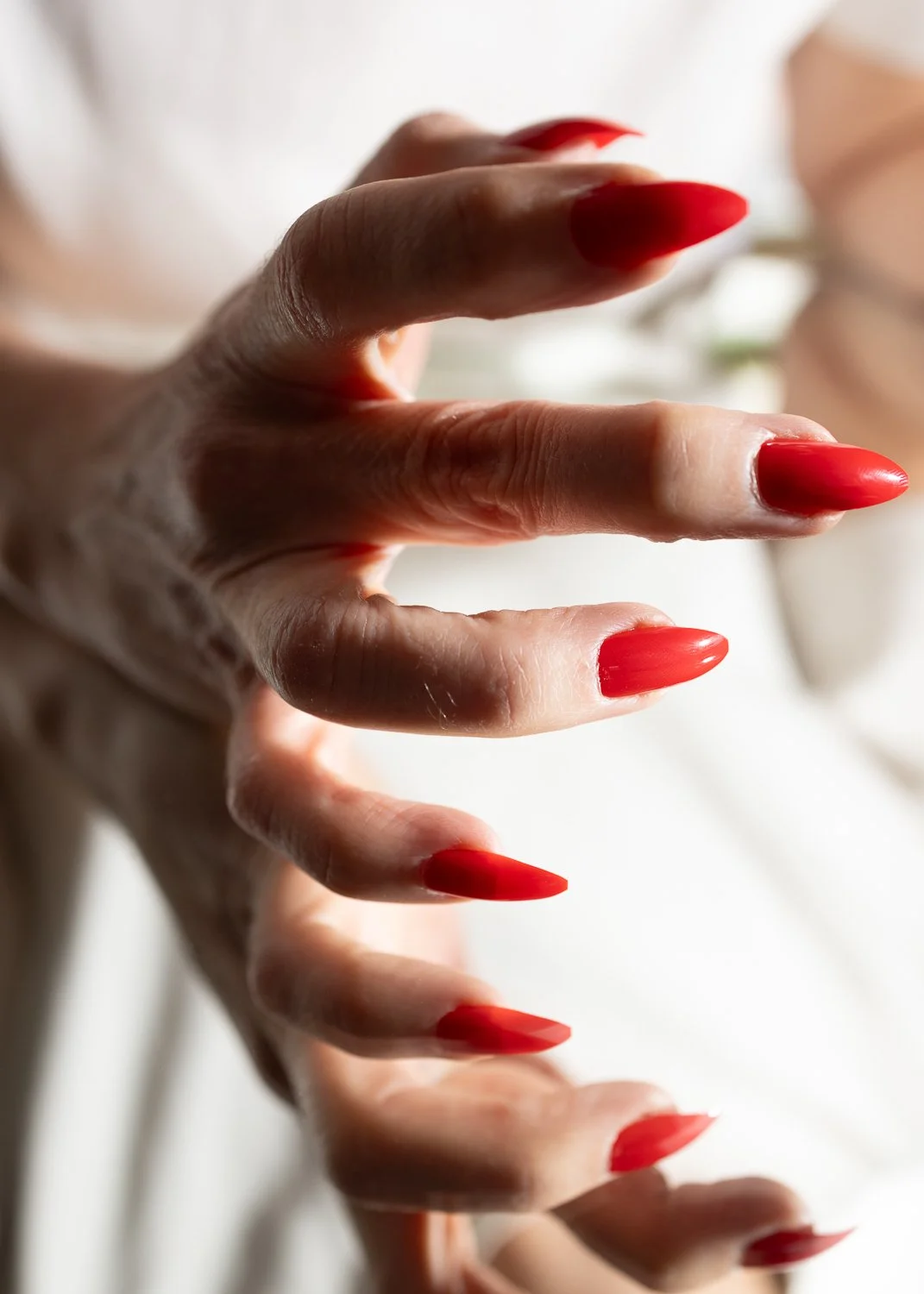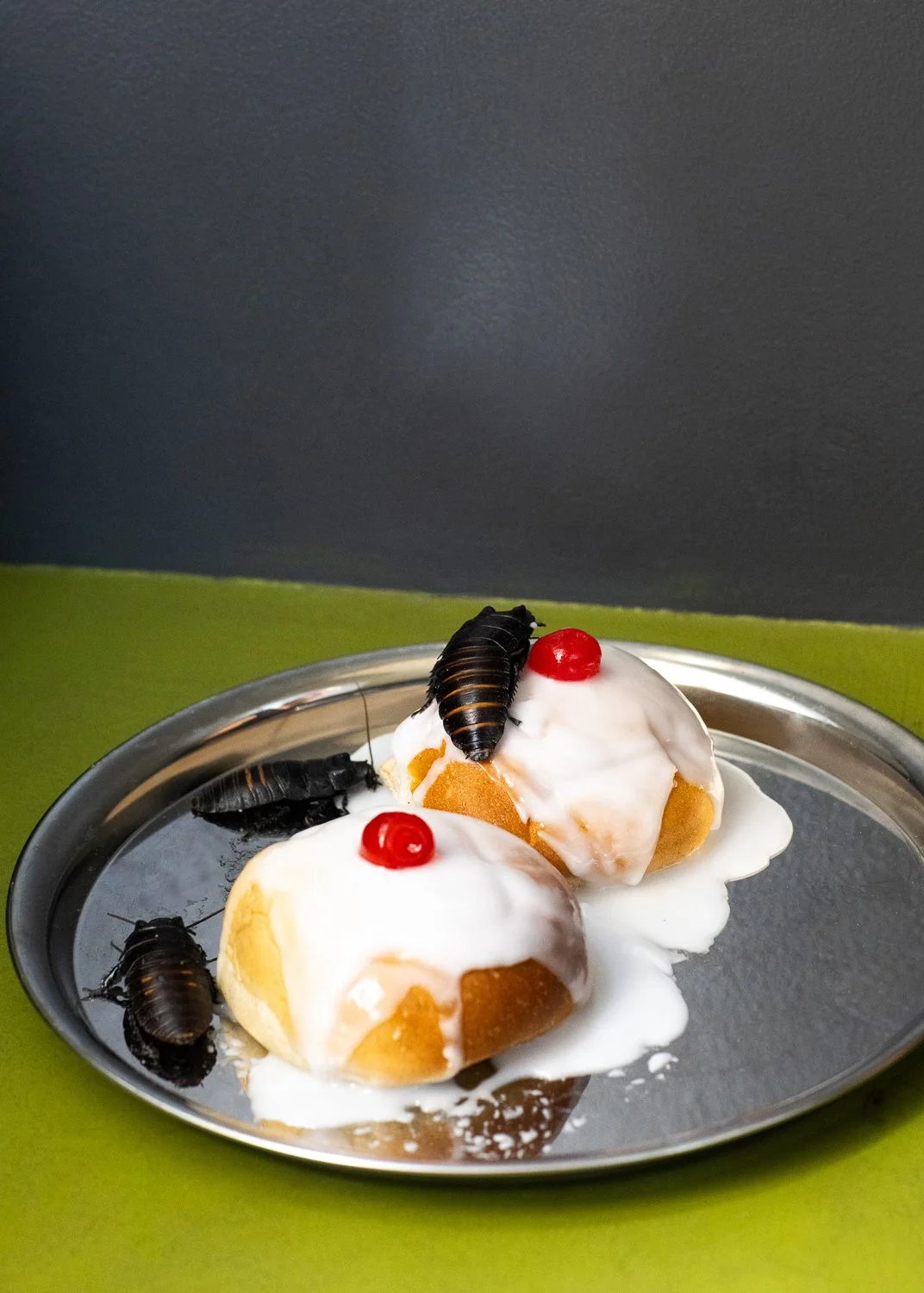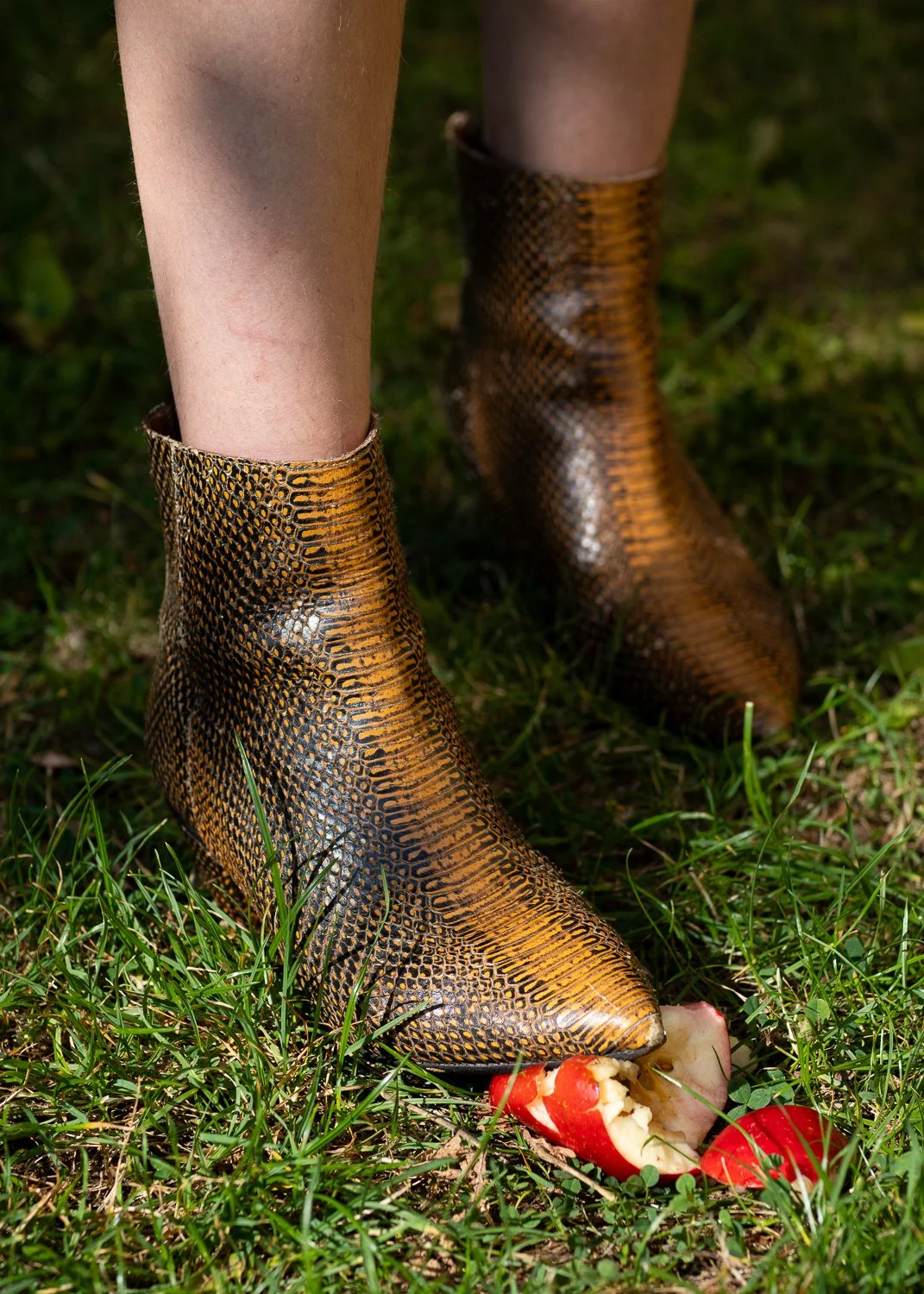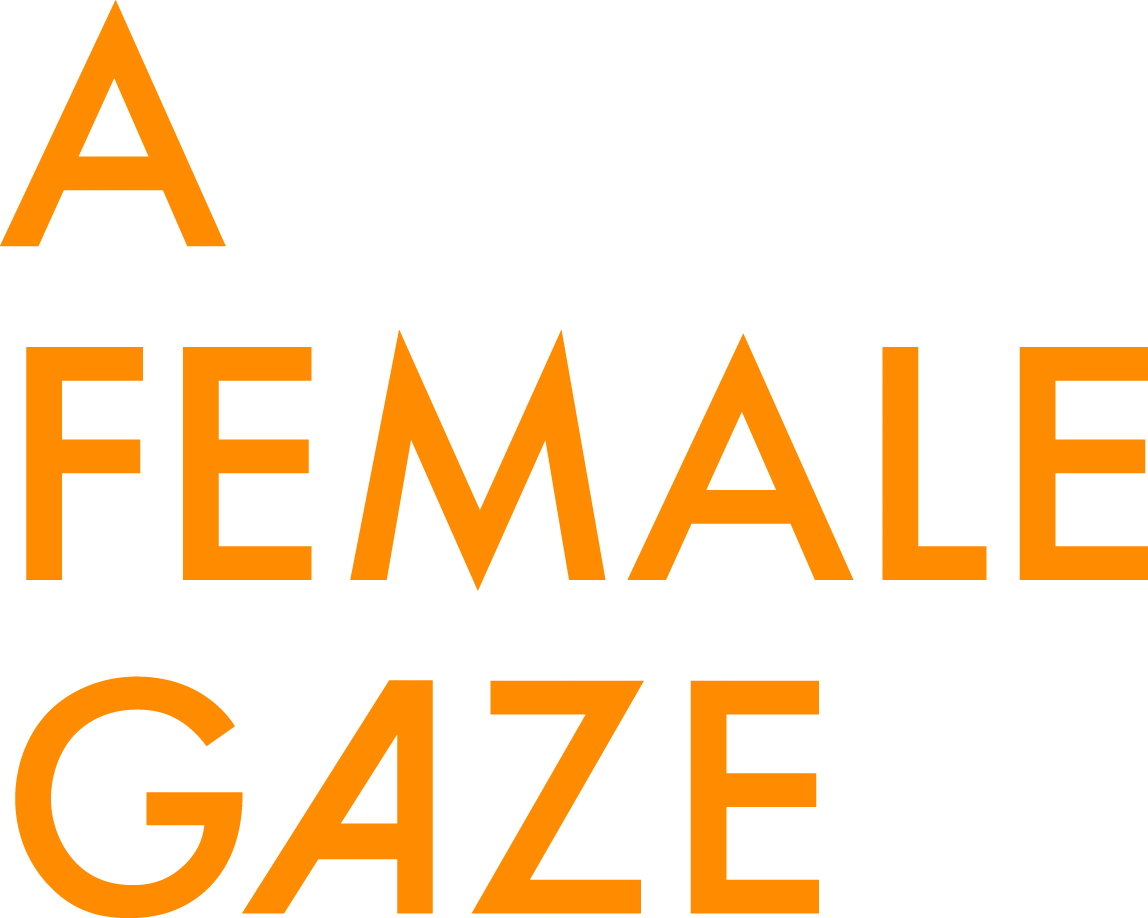The Original Sinners
The Original Sinners is a photographic project that re-examines female mythical figures, such as
the Huldra, Witches, Lilith, Eve and Agatha of Sicily - through the lens of feminist critique and
contemporary visual culture. These figures, often drawn from folklore and theology, have long
served as cultural warnings: to discipline women, and to terrify men.
At the heart of this project is the idea that these myths were not innocent fictions, but social
tools: constructed to police behavior, enforce silence, and pathologize female power. From Eve,
whose hunger for knowledge is blamed for humanity's fall, to the Huldra, a forest seductress
whose beauty is a threat and a metaphor for female deceit, these stories enforce the notion that
a woman who steps outside her prescribed role becomes monstrous, cursed, or punished. Eve,
the so-called mother of sin, is remembered less for being the origin of life than for her act of
disobedience—an act that redefined curiosity and desire for knowledge as transgression. By
casting her as the cause of humanity’s suffering, the myth entrenched the idea that women’s
choices are dangerous, selfish, and in need of control.
The Huldra, a creature from Scandinavian folklore, embodies the tension between enchantment
and danger. She is often described as breathtakingly beautiful from the front, but with a hidden
tail—her body both alluring and marked as unnatural. The Huldra tempts men away from society
and into the forest, where succumbing to her charm often leads to ruin. This duality—beauty as
deception, female sexuality as a trap—transforms her into a living allegory of mistrust in
women’s desire, suggesting that beneath attraction lies corruption or punishment.
The 3rd century Christian virgin martyr, Agatha of Sicily, experienced the consequences of
refusing male advances, and had her breasts cut off before being killed, and her story was told
as a warning about chastity, obedience, and the dangers of female independence. Her suffering
was sanctified, turning mutilation into a symbol of purity and obedience to God, while also
cementing the idea that a woman’s body was a site of punishment when she resisted male
authority. Agatha’s tale illustrates how narratives of female virtue often depend upon violent
sacrifice, where pain becomes proof of sanctity and submission.
Lilith, often described as Adam’s first wife who refused submission, embodies the archetype of
female defiance—her demonization a direct result of her insistence on equality and autonomy.
Over time, she was recast as a night demon who preyed on infants and men, transforming
female independence into something monstrous, sexualized, and dangerous. In this way, Lilith
represents how women’s resistance to control has been reframed as a threat to social and
cosmic order.Figures like the Witch represent the fear of female autonomy and rage. Once healers,
midwives, and keepers of communal knowledge, witches were reimagined as agents of the
devil: dangerous women whose unruly bodies and powers needed to be eradicated. The witch
hunts of Europe and America turned suspicion of women’s independence into state-sanctioned
violence, branding women’s wisdom and anger as criminal, heretical, or insane. These mythic
women are often portrayed as abject, a term philosopher Julia Kristeva uses to describe what is
cast off, reviled, or beyond the boundaries of the acceptable. Their bodies leak, seduce, kill, or
devour. They are polluted and powerful in the same breath.
But these myths are not relics of the past. They persist in modern media, law, and public
imagination, mutating into tropes like the “crazy ex,” the “hysterical woman,” the “femme fatale,”
or the “frigid woman.” They live on in the way society stigmatizes female anger, punishes sexual
autonomy, and ridicules aging, illness, and difference in women’s bodies.
Through photography, The Original Sinners seeks not just to expose these mythic mechanisms,
but to reclaim them, by placing them in a modern setting. Together, Eve, the Huldra, Agatha,
Lilith, and the Witch reveal a shared narrative: that women who question, refuse, desire, or
resist are cast as dangerous. By bringing them into dialogue with one another, the project
highlights how these myths form a lineage of resistance as much as repression—offering not
only a critique of the past, but a framework for reimagining female power in the present.

Witches

Huldra

Eve

Agatha of Sicily

Lilith
